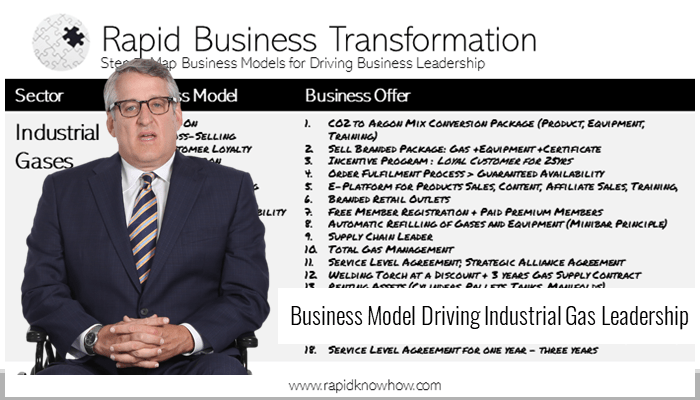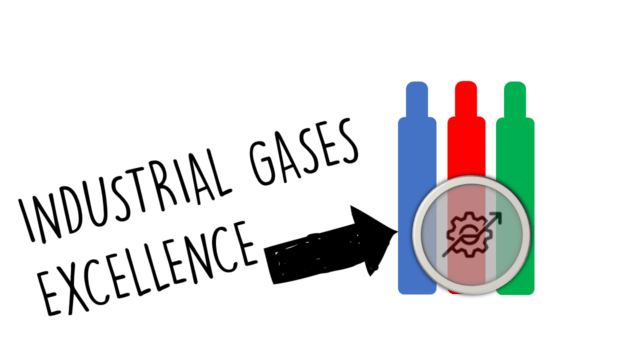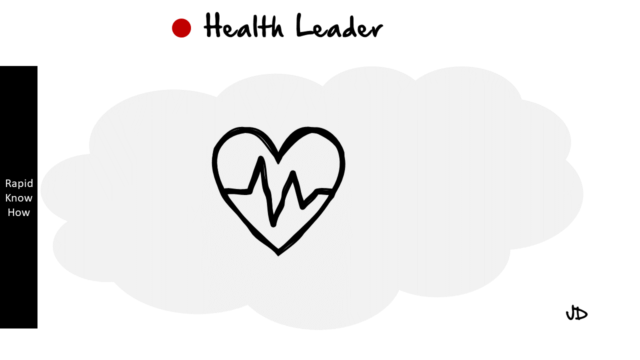How to transform our industrial age business model into a digital leading model in the industrial gas industry?
The transformation of our industrial age business model into a digital leading model, particularly in the industrial gas industry, is a complex yet rewarding process. This transition is not merely about digitising existing processes; it’s about fundamentally rethinking how we do business in the digital age.
To begin with, let’s discuss three breakthrough strategies that have proven effective in this transformation:
3 Breakthrough Strategies That Work
1. **Digital Innovation:** This involves leveraging digital technologies to create new or improved products, processes, or business models. For instance, using data analytics to optimise production processes or IoT devices for real-time monitoring of gas consumption.
2. **Customer Centricity:** In the digital age, customer expectations are higher than ever. Businesses need to focus on providing personalised, seamless experiences across all touchpoints. This could involve using CRM systems to better understand customer needs and preferences or implementing self-service portals for easier order management.
3. **Agile Operations:** Digital businesses need to be flexible and responsive to changes in the market environment. This could involve adopting agile methodologies for project management or using cloud-based solutions for scalable, on-demand IT resources.
Case Studies of Succesful Transformation in the B2B Sector
Now, let’s look at some case studies of successful transformations in the B2B sector:
**Case Study 1: General Electric (GE)**
GE has been a pioneer in the industrial internet, leveraging big data and analytics to transform its operations. They developed Predix, a cloud-based platform that collects and analyses data from industrial machines, enabling predictive maintenance and optimised operations.
**Case Study 2: Siemens**
Siemens has embraced digitalisation across its business units, including its gas and power division. They’ve implemented digital solutions like remote monitoring and diagnostics for gas turbines, which has improved operational efficiency and reduced downtime.
Follow the Leaders…
So how can your business follow in their footsteps? Here are some steps to consider:
1. **Assess your current state:** Understand your current digital maturity level and identify gaps in your capabilities.
2. **Define your vision:** Outline what digital transformation means for your business and what you hope to achieve.
3. **Develop a roadmap:** Plan out your transformation journey, including key initiatives, timelines, and resources required.
4. **Implement change:** Execute your plan, ensuring to monitor progress and adjust as necessary.
5. **Cultivate a digital culture:** Encourage a mindset of continuous learning and innovation among your employees.
In conclusion, transforming from an industrial age business model to a digital leading model requires a strategic approach that encompasses digital innovation, customer centricity, and agile operations. It’s not an easy journey, but with the right strategies and mindset, it’s certainly achievable.
The key takeaway is that digital transformation is not just about technology; it’s about changing the way we do business. It requires a holistic approach that involves rethinking our products, processes, customer interactions, and even our organisational culture. By learning from successful transformations and following a structured approach, businesses in the industrial gas industry can successfully navigate this digital revolution.




